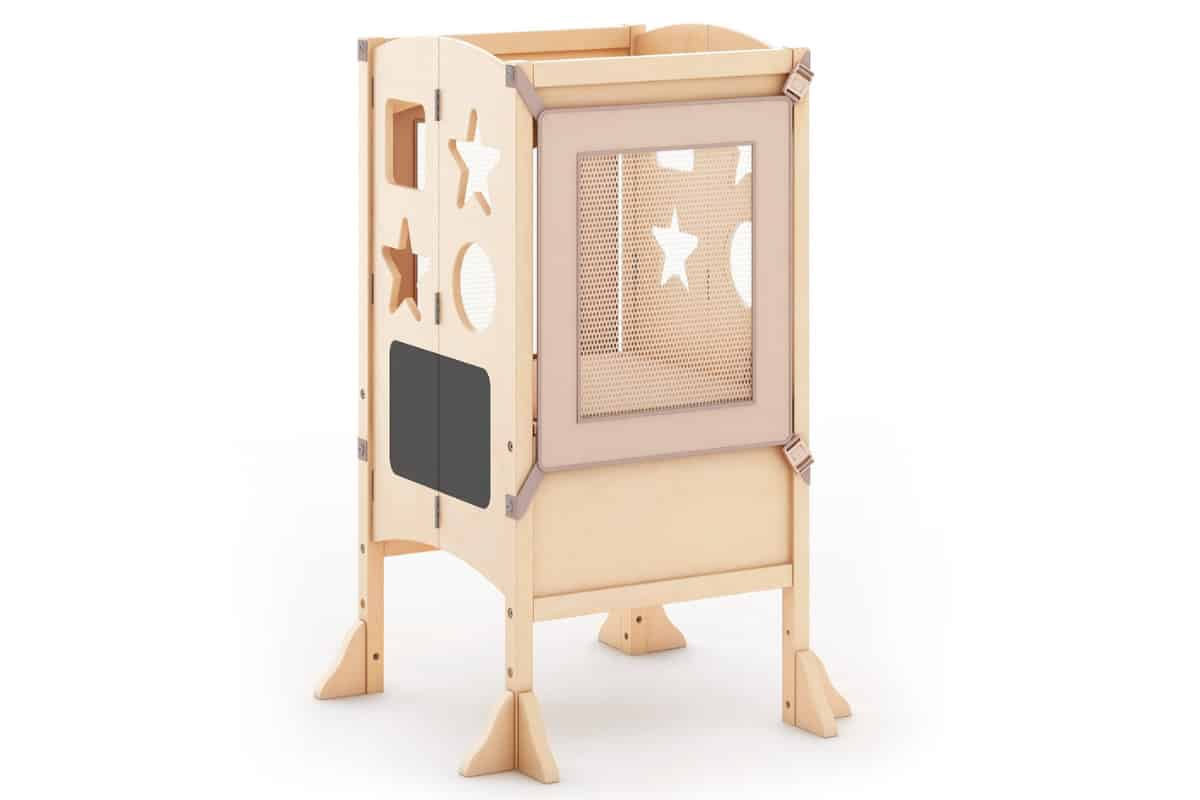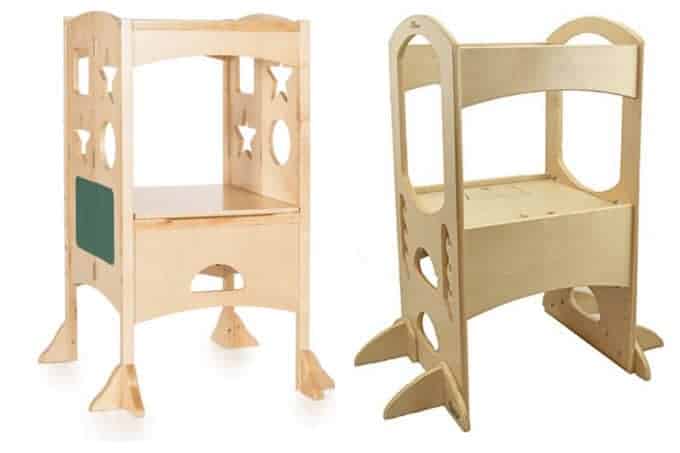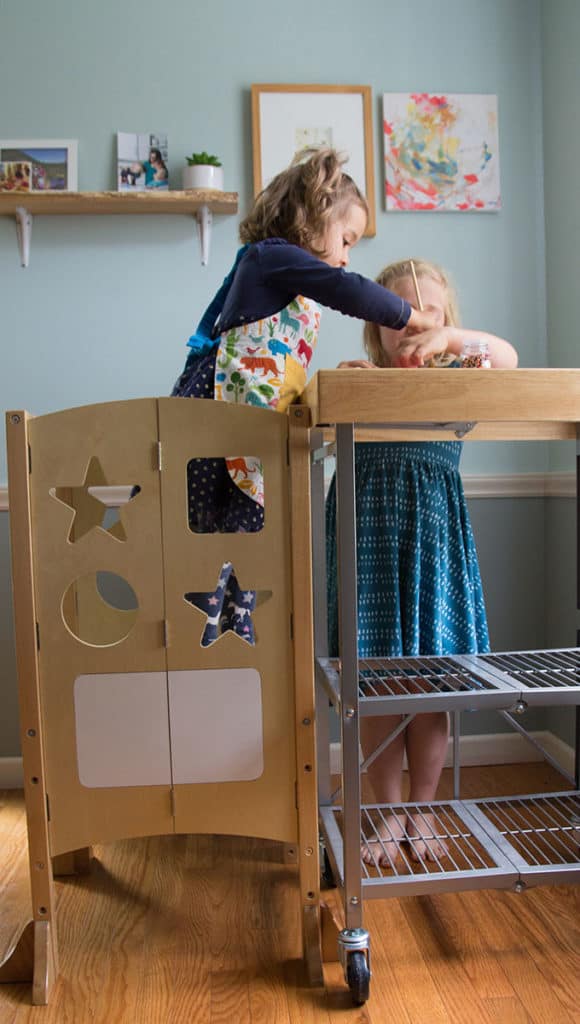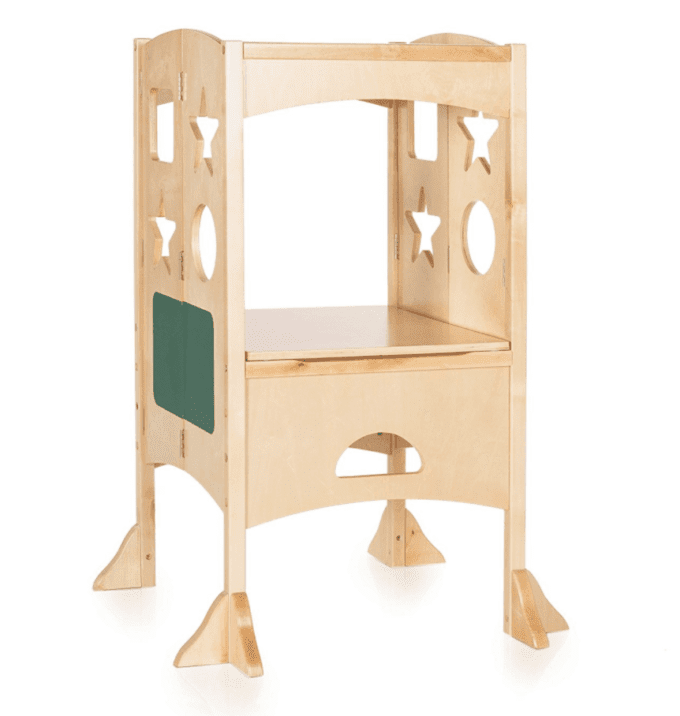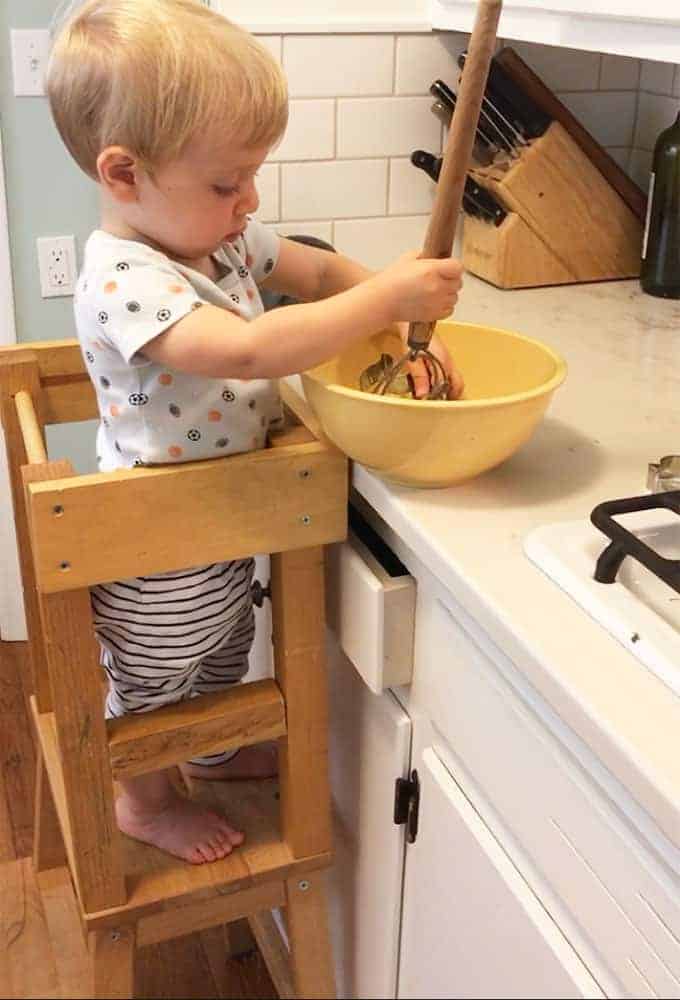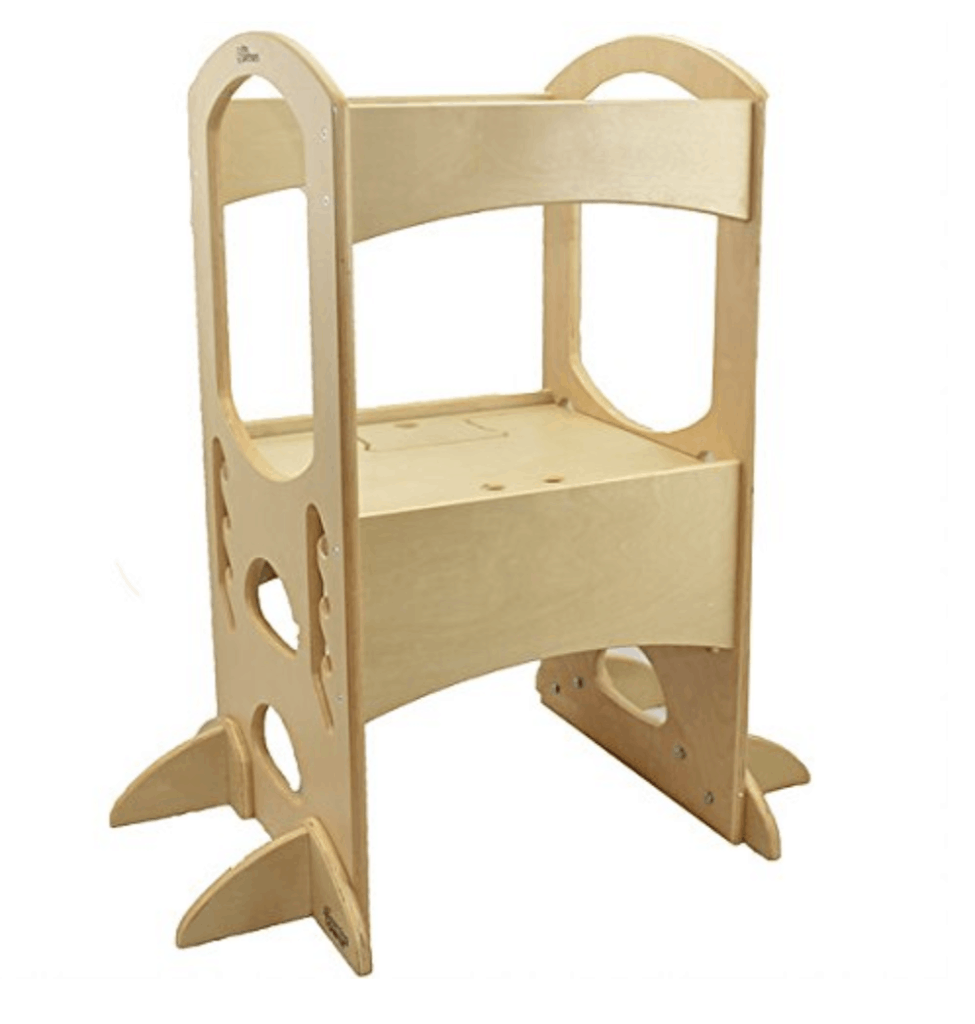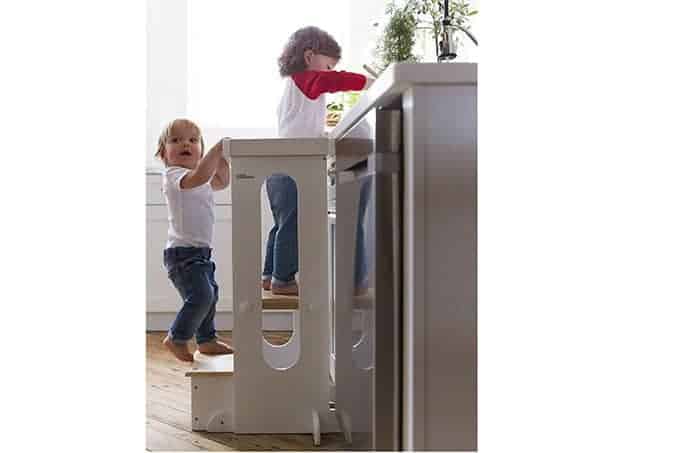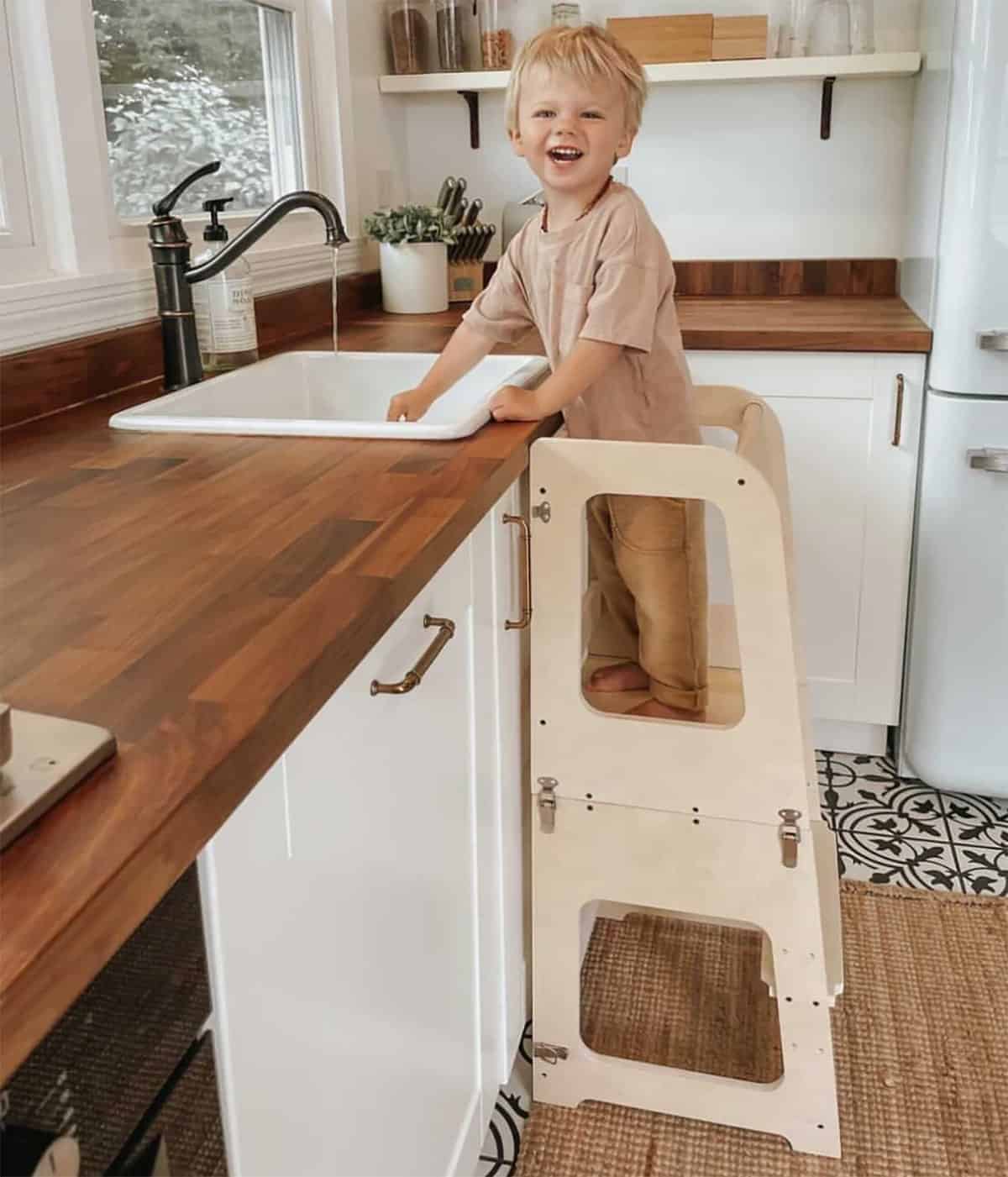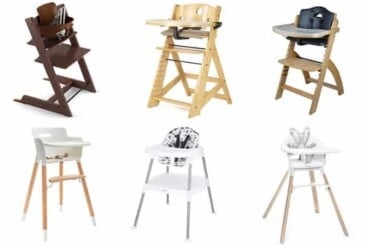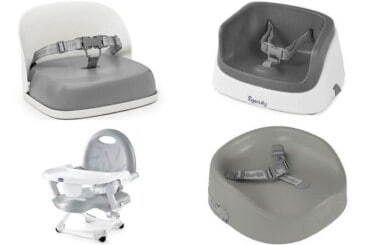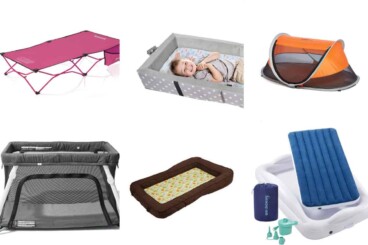Learning Towers for Toddlers
We love how a learning tower, which is essentially a stool with a guard on top to prevent falling, gets toddlers into the action. Little kids love to help and be with grownups in the kitchen, and this is the safest way to make that happen. And since a learning tower (which is sometimes called a kitchen helper) will likely live in your kitchen for a few years, it’s a good idea to think through:
How much space you have. How long you want it to last. How many kids you think might use it.
This will help you think through your budget to pick the best one for your family. From an IKEA-hack option that starts with a $20 stool to a foldable yet durable mid-priced option, to the upper tier of learning towers, there is surely one to fit your needs and your budget! (You may also like Toddler Highchairs, Best Portable Highchairs, and Reusable Pouches.)
Toddler Stool vs. Learning Towers
You can use a regular toddler stool, but there are so many benefits to using a real learning tower. But honestly, my kids have unintentionally fallen backward off of stools enough times that I don’t recommend them. I 100% love the safety aspect that learning towers offer because while you still need to supervise children in the kitchen, there are times when you may need to leave their side. Sign up for our email updates to get tips and ideas sent to your inbox. It’s so nice that you can have them help with toddler activities in the kitchen, or simply play at the counter while you work, and you don’t need to stand right next to them the entire time for fear that they’ll fall. If you want your toddler to safely be at counter height with you to cook (or to play while you cook), an actual learning tower is a must. This is probably the most used item in my kitchen!
Benefits of Learning Towers
They offer a safe way for toddlers to be at kitchen counter height without excessive worry that they’ll fall. They allow toddlers to be part of the action when you’re cooking dinner, cleaning up, or are otherwise busy in the kitchen—and they love that! They’re a great spot for toddlers to safely stand when they’re actually helping you cook (if you do that sort of thing with your littles). Toddlers can climb in and out of a learning tower on their own, making it something they can take ownership of, which they love! They can use a learning tower to wash their hands on their own and generally gain more independence.
Best Learning Tower, Small Spaces
Guidecraft Kitchen Helper (less than $200)
Full disclosure: Guidecraft sent me one of their learning towers to try, and though I was honestly not looking for a new learning tower, we LOVE this one. It came nearly fully assembled. It took me just a few minutes to screw on the foot stabilizers. You can adjust the height of the interior platform as the kids grow, it wipes down easily, and it isn’t too big for smaller spaces. Plus, you can fold it flat for storage, and it comes with a mesh back to prevent falls. It’s also easy to move around if needed (I have felt coasters on the bottom of each foot) and is roomy enough for a toddler to stand in and use up until 4-5 years of age. (My 4.5-year-old uses ours regularly.) Bottom line: This is affordable and well-made. It folds to store flat if needed and is big enough for a toddler to comfortably stand in it, but doesn’t take up too much space in the kitchen. Buy here.
Best Learning Tower, Budget
DIY Ikea-Hack Learning Tower (Less than $50)
We had our IKEA-Hack Learning Tower for 5 years and loved it—especially since it’s very compact and costs under $50 to make since you start with an IKEA stool and build a simple frame on top. It’s easy to move, easy for toddlers to get in and out of, and the perfect height for a toddler to stand at the counter. It worked wonderfully for our first child. But… we had a different experience with our second who is a total climber. She’d regularly try to sit on the back bar, which is a problem since she could easily topple over. (This is skinnier and narrower than the other learning towers in this guide, so it falls over whereas the others are unlikely to do that due to their design.) Bottom line: It’s a great option if you’re on a budget and have a small space. Keep a close eye on how the kids use it to ensure it’s a safe option for your family. Expect your toddler to outgrow it by the time they’re 3 or 4. This is the how-to method we used (and that my dad used to make numerous towers).
Best Learning Tower, Classic
Little Partners (Less than $200)
This Little Partners toddler learning tower is usually thought of as the Rolls Royce of towers. Parents who have one swear by it and I’ve heard testimony after testimony of how durable and useful they are for years, and through multiple kids. It comes in a few colors and the company also offers accessories like an easel, a busy board, and a nonslip mat to put underneath. Bottom line: If space isn’t an issue and you want a learning tower that will last for years, this is a great option. Buy here.
Best Safe Kids Stool
Little Partners FOLDABLE Step Stool (less than $160)
This slim-design super durable stool is similar to a learning tower but sort of streamlined. It would be a great option for small spaces or older kids who still need a height boost–and it’s super durable. Bottom line: If you’re looking for something that takes up less space but is still super safe, this kids stool is a great option. Buy here.
Best Convertible Tower
Piccalio Mini Chef Convertible Tower (less than $200)
It’s a tower! It’s a table! It’s a chair! It’s so cool, is what it is. This is a great option if you want a multi-purpose piece of furniture that your toddler can use again and again. It also has three height settings, so you can adjust it to fit as your child grows. Bottom line: This is a great option if you want a tower that can double as a kid-size table and chair set. Buy here. (sponsored)
PICCALiO MINI CHEF FOLDABLE TOWER (Less than $230)
With an adjustable platform (for three height options) and a foldable design that allows you to easily take this toddler tower in and out of the kitchen, this is another great option from Piccalio. Bottom line: This is a nice choice if you want maximum versatility and ease of putting the tower away when not in use. Buy here. (sponsored)
Best Tips for Using a Learning Tower
Plan to start around 16-18 months, or as indicated on the kitchen helper you purchase, and look at the accessories from each brand to see what additional safety options are available. (Guidecraft makes a mesh cover, so you can seal up one of the openings for added security while the kids are in it, for example.) We keep our tower in a set place in our kitchen so our toddler knows where they can use the counter—and so I know where to keep things out of reach. Always check the weight limit and be sure that the standing platform is safely secured. Wipe down the tower occasionally since it may get dusty or sticky, depending on how you use it. If your child is using the learning tower unsafely—jumping on it, using it as a ladder to get onto the counter, trying to pull it over, I suggest putting it away for a few days or otherwise limiting their use to reset the behavior. They need to behave to earn the right to use it. Check the dimensions to be sure it will fit into your kitchen, and consider how to share the tower if you have more than one kiddo. There are some options for a double-wide tower, but that works only if you have the space for it. Use the tower as a sturdy place for your child to do simple hands-on activities while you cook (or activities like Baking with Kids, making Salt Dough, Cookies for Kids, or Graham Cracker Houses) so they can be nearby. It’s not just for cooking! (Many families also use it in the bathroom for brushing teeth.)
I’d love to hear your experiences with a learning tower. Please leave a comment and share!
Best Toddler and Baby Highchairs
Best Booster Seats for Toddlers at the Table
Best Sippy Cups for Toddlers and Babies
Favorite Toddler Travel Beds
This post was first published November 2019.
